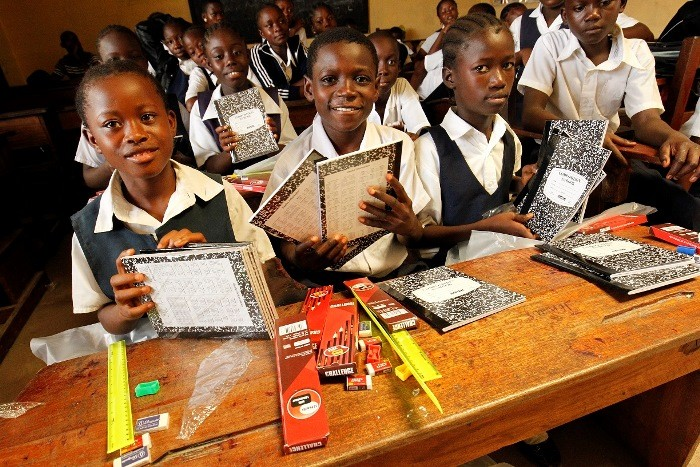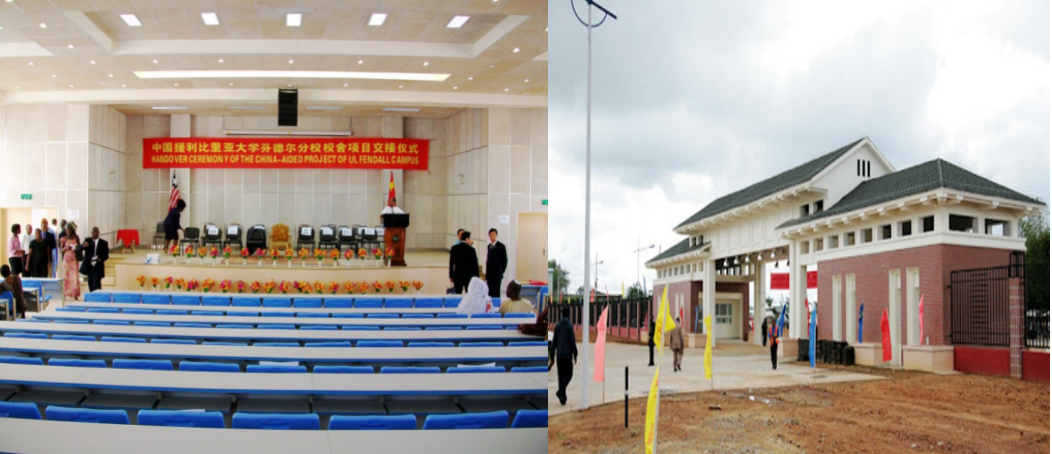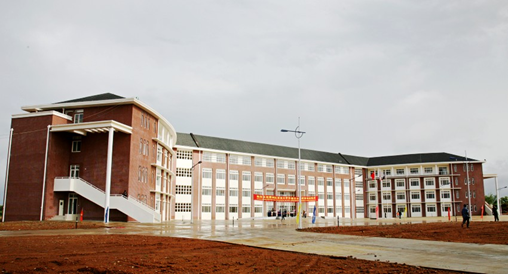1.0. OVERVIEW OF EDUCATION IN LIBERIA
For rapid and sustainable economic development and social changes, education has become the key element for both individuals and nations in the world. In society, there are more opportunities for the literate compared to less educated people. Moreover, access to education eventually transforms physical, spiritual and psychological development.
Liberia is one of the West African countries with the city of Monrovia as the capital. The country is bordered by Sierra Leone, Guinea and Côte d'Ivoire. According to World Bank (2019), almost 33.2% of the population of Liberia (4.937 million) have no education, with only 31.1% having primary education, whiles 35.75% have secondary and tertiary education (UNESCO, National Review Report 2015). Education in Liberia was affected by political instability from (1989-2003) and consequently resulted in disruption of the education system including infrastructural development. (International Institute for Educational Planning, 2011). During the unrest, both public (30%) and community schools (24%) were destroyed resulting in a decrease in the enrollment of the pupil in most cities in Liberia. Since education is key to national development, the Government of Liberia after the unrest intended to provide equal quality education opportunity to all citizens by shaping the individual’s physical, psychological, moral development and protecting human rights by providing the environment that is required to secure good health, liberty, security, economic well-being and participation in social and political activities (Ministry of Education, Liberia 2018).

Source: https://wwwnc.cdc.gov/travel/destinations/traveler/none/liberia.
2.0. GOVERNMENT AND OTHER ORGANIZATION’S RESPONSE TO EDUCATIONAL CHALLENGES IN LIBERIA.

Source: https://www.usaid.gov/liberia/education.
Despite the unrest, there has been tremendous development and reforms in Liberia’s educational system over the past decade. According to World Data Atlas (2015), though the government intends to provide quality education for all in the country, there are high illiteracy rate with fifty-three percent (53%). Lack of essential teaching materials and qualified teachers, however, affected the quality of the educational system in Liberia per the report from Liberia Demographic and Health Survey, 2013 during the civil unrest that spanned for more than 14 years. In effect, the government has embarked on various strategies to improve the educational system in both rural and urban cities in Liberia (Fashina, 2017).
The Government of Liberia through the Ministry of Education in September 2016, initiated the Partnership Schools for Liberia (PSL). This partnership made the eight (8) private organizations took over the management of 93 government primary schools. Moreover, a three-year randomized controlled trial (RCT) was set up by a U.S. organization, Innovations for Poverty Action (IPA), which specializes in running RCTs to assess the impact of PSL to improve the quality of education in Liberia.
Further, the USAID, in collaboration with the Ministry of Education (MOE) addressed education challenges related to access, quality of instruction, and improved governance of the education system in Liberia. The introduction of the Accelerated Learning Program (ALP) from the Accelerated Quality Education (AQE) program seeks to address the problem for students aged 8-15 and out-of-school children. More so, AQE in Liberia is to help the Ministry of Education to institutionalize an ALP regulatory framework and prepare students to transition into the formal education system. The four (4) year program, targeted 48,000 out-of-school children and provides access to quality education for them. Almost 780 teachers are supposed to benefit from professional development opportunities to improve quality instruction in Liberia (USAID 2017).

Source: https://www.globalpartnership.org/where-we-work/liberia.
3.0. ENROLLMENT AND COMPLETION IN THE EDUCATIONAL SYSTEM
In an attempt to reform the educational system, the Agenda for Transformation was introduced and embarked on by the Government of Liberia (GoL) to prioritized education with a goal to provide education for all (EFA). Free compulsory education program is set for kids at grades 1-9 in Liberia. Regarding enrollment, the system enrolled 303,168 students in 1981 whiles 1.46 million students were enrolled in 2015. Both Junior High School (JH) and Senior High School (SH) enrolled more students compared to the tertiary level enrollment in Liberia. The enrollment eventually increases pressure on government resources, including the provision of teachers and classrooms (EMIS 2015).
The number of enrollment in Non-governmental schools in Liberia (i.e., private, mission and community schools) account for 46 percent of student enrollment. Private, Mission and Community Schools enrolled the majority of the students in the country. In 2015, private and mission schools accounted for 41 percent of ECE enrollment, 44 percent of primary school enrollment, 55 percent of JH enrollment and 77 percent of SH enrollment (EMIS 2015). Over the past few years, there has been a major increase in enrollment in private schools. In 2007/2008 saw an 18.3% increase in enrollment in private schools and 29.8% in the year 2015.
4.0. THE EDUCATIONAL ACT OF LIBERIA
The Liberia Education Law of 2001 made primary education free and compulsory for all students, while the New Education Reform Act of 2011 established free and compulsory primary education and basic education through to ninth grade for all Liberian citizens. On the other hand, the intention of the Liberian Government’s inclusive education making fundamental changes to the entire education system (policies and resource allocation, teaching practices, curricula, assessment, infrastructure, etc.) in order to make education flexible. The Policy of Inclusive Education in Liberia has the following values and guiding principles;
· Every student has a right to quality education; therefore, no student should be excluded from or discriminated against within an education system on grounds of race, color, sex, language, age, class or social group, religion, ethnic origin, birth, poverty, disability or any other status.
· All students can learn and benefit from education; hence, changes need to be made throughout the education system and with communities, to ensure that the system adapts to the learner, rather than learners adapting to the system.
· Accessibility is a key component of education and all facets of education, including the curriculum, the teaching methods, assessment, school culture and environment, should uphold inclusive education principles through being made accessible for all learners.
· Individual dissimilarities among learners are a basis of richness and diversity, and not a strain.
· The diversity of needs and patterns of development of students should be addressed through a wide and flexible range of responses.
· The most effective means of building an inclusive society and realizing education for all are through inclusive educational environments and orientations.

source:https://www.unicef.org/liberia/basic-education
5.0. SUPPORTS AND OTHER FINANCIAL ASSISTANCE
The Government of Liberia in partnership with private institutions and other international donors like USAID, helping to improve the quality of curricula, teaching and management staff, instructional and learning resources, data systems and policy environment essential to providing basic education services to all Liberians.
5.1. EARLY GRADE READING
USAID plans to support an early grade reading activity for grades one and two students in public primary schools in six targeted counties in Liberia. A pilot literacy skills program for students in public kindergarten schools for students to improve their reading, oral vocabulary and understand grade level text in English required for emergent literacy skills.
5.2. ACCELERATED LEARNING FOR OUT-OF-SCHOOL CHILDREN
USAID’s new Accelerated Quality Education (AQE) program implementation of Accelerated Learning Program (ALP) for students aged 8-15 to address the problem of over-age, out-of-school children. AQE will help the Ministry of Education institutionalize an ALP regulatory framework and prepare students to transition into the formal education system. AQE will be implemented in 260 schools. It is a four year program, which targets 48,000 out-of-school children and provides access to quality education for them. The AQE Project is being implemented in 260 identified ALP sites across the six USAID-focused counties. In addition to providing access, approximately 780 teachers will be identified and provided professional development opportunities to improve quality instruction that will lead to the acquisition of equivalent primary school competencies for learners.
5.3. HIGHER EDUCATION SUPPORT
The University of Liberia and Cuttington University partnership with USAID has built centers to expand access, improve quality, and enhance the relevance of higher education programs in engineering and agriculture fields that are critical to addressing Liberia’s development challenges for the Excellence in Higher Education for Liberian Development project.
5.4. ADOLESCENT GIRLS EDUCATION PROGRAM SUPPORT
The addressing of the girls’ diverse psychosocial needs and provide access to education in an innovative, safe, and rigorously monitored learning environment through USAID’s Learning Links Project, has been instrumental in the girl child education and to develop literacy and numeracy skills at a pace comparable to their in-school peers thereby reducing literacy and numeracy deficiencies and transitioning to formal school in Liberia. This project from USAID has provided support for over 360 tutor-mentors, the MOE’s ABE curriculum, SMS based evaluations, and micro-incentives to create and provide access to an alternative, flexible learning environment for 2,500 teen girls who have left school due to pregnancy. In addition, the Learning Links Project is supposed to train 360 numerate and literate women to serve as tutor-mentors for the Liberian Ministry of Education's Alternative Basic Education Curriculum and connect them to these girls who have dropped out of school.
5.5. YOUTH SUPPORT
The capacity enhancement of the Ministry of Education (MOE) and non-governmental organizations (NGOs) to provide increased access to alternative basic education, social opportunities, leadership development, and sustainable livelihood pathways for out-of-school Liberian youth. This has been the project of USAID Advancing Youth. The Projects have provided the youth through the MOE and NGOs with the educational and work-readiness skills and training necessary to help in the development of the country.
5.6. EBOLA RESPONSE IN EDUCATION
Post Ebola response from USAID/Liberia saw the provision of logistical support for the Ministry of Education’s national campaign to train school personnel in Ebola prevention and awareness. The technical assistance to the MOE to further develop, monitor and implement its Ebola prevention and response plan was also provided by the USAID. Further, the USAID’s Education Crisis Response Team supported the Liberia program through UNICEF by providing toilet facilities, hand washing stations, and clean water pumps are being installed in 120 schools during post-Ebola.
5.7. SUPPORT FROM THE CHINA GOVERNMENT
Through the diplomatic relations between the People’s Republic of China and the Republic of Liberia, the Chinese Government supported the University of Liberia, Fendall Campus one of the biggest projects build in Liberia.

Source: http://lr.china-embassy.org/eng/sghdhzxxx/t720771.htm.
The project was completed and handed over in 2010 starting from April 2008 to contribute to the improvement and enhancement of education of higher learning in Liberia. The project consists of:
· Four-storey teaching and administrative building (about 12,000㎡) which houses an academic exchange center accommodating 360 attendants, 2 large classrooms with a seating capacity of 150 each, 27 classrooms, 4 audio rooms, 4 computer rooms, a five-roomed library, 63 offices, 3 research rooms, 8 conference rooms and 2 cafeterias;

Source: http://lr.china-embassy.org/eng/sghdhzxxx/t720771.htm.
· 4 two-storey buildings of students’ dormitory which can accommodate about 1,000 students;
· 5 three-storey staff dormitory buildings that contains 78 apartments of three categories;
· auxiliary facilities including a gatehouse, a China-Liberia Friendship Tower that also houses a huge water tank, a power house accommodating three 750KV generators, a water-pumping house, a sports ground with a football court in the center, 2 basketball courts and a tennis court.
· some teaching facilities like power point projectors, computers, broadcasting system and etc.;
· furniture provided by the Chinese government as an additional program to the project.
References
[1] Adeboye A. F. (2017). Teacher quality and Liberia’s educational system. Arts & Humanities Open Access Journal 1 (4): 1–2.
[2] Dalieh T. F. (2017). Liberian Educational Stakeholders' Perceptions of Overcrowding in an Urban Public Elementary School in Monrovia: College of Education. Walden University.
[3] Klees S. J. (2017). Liberia’s Experiment with Privatizing Education. National Center for the Study of Privatization in Education: Teachers College, Columbia University. accessed at http://ncspe.tc.columbia.edu/working-papers/WP235.pdf.
[4] Ministry of Education Liberia (2018). Inclusive Education Policy in Liberia. Retrieved September 4, 2021 from http://moe-liberia.org/wp-content/uploads/2019/07/Liberia-Inclusive-Education-Policy.pdf.
[5] Ministry of Education. (2016). Liberia Education Sector Analysis. Monrovia: Republic of Liberia.
[6] Ministry of Education. (2016). Getting to Best Education Sector Plan 2017–2021. Monrovia: Republic of Liberia.
[7] Republic of Liberia. (2011). Education Reform Act of 2011. Monrovia: Republic of Liberia.
[8] Sumaworo M. (2015). Challenges of Tertiary Education in Liberia and Possible Solutions. European Scientific Journal. ESJ November 2015 Special Edition.
[9] USAID (2000). Education Better Educated Liberians. Retrieved September 4, 2021 from https://www.usaid.gov/sites/default/files/documents/1860/USAID_Liberia_-_EDUCATION_Sector_Fact_sheet_0.pdf.
[10] UNESCO. (2011). Fragility and education in Liberia. Paris: UNESCO International Institute for Educational Planning. Retrieved September 4, 2021, from http://www.iiep.unesco.org/en/publication/education-and-fragility-liberia.
[11] UNESCO (2015). National Review Report 2015. Accessed at https://en.unesco.org/gem-report/report/2015/education-all-2000-2015-achievements-and-challenges.
[12] UNESCO (2017). Education in Liberia. Retrieved September 2, 2021 from https://www.usaid.gov/liberia/education.
[13] UNESCO Institute of Statistics. (2019). Liberia. Retrieved September 4, 2021. http://uis.unesco.org/en/country/lr.
[14] World Bank (2016). Liberia Education Sector Analysis. Retrieved September 4, 2021 from https://documents1.worldbank.org/curated/en/481011575583469840/pdf/Liberia-Education-Sector-Analysis.pdf.
[15] World Bank (2019). World Bank in Liberia Annual Report. Retrieved September 2, 2021 from https://www.worldbank.org/en/country/liberia/overview.